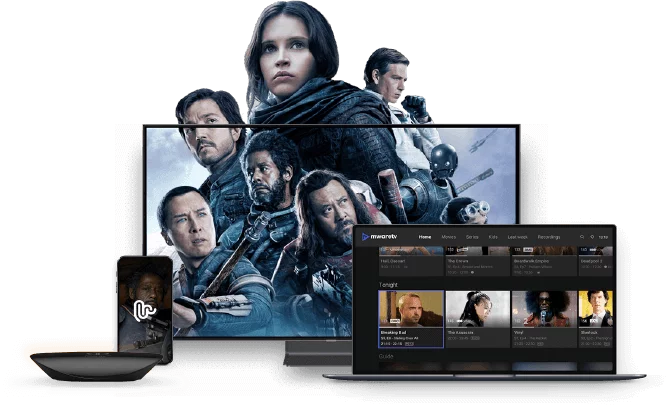Gain Access To Premium Material: IPTV Subscription Plans Tailored to You
How IPTV Works: A Step-by-Step Overview to Internet Procedure Television Modern Technology
Web Procedure Television (IPTV) has actually changed the method we consume tv material, supplying a new realm of possibilities via the power of the web. Recognizing the complexities of how IPTV functions can shed light on the innovation that drives this ingenious kind of media delivery. From the essential principles of IPTV to the intricate process of web content distribution, each step plays a critical function in making certain a seamless viewing experience. In this guide, we will certainly reveal the underlying mechanisms that make IPTV a fascinating combination of technology and entertainment.
IPTV Basics
In understanding IPTV essentials, it is crucial to comprehend the essential operations of this technology in supplying tv material online. IPTV, which represents Internet Protocol Tv, makes use of Internet Method (IP) networks to send tv material to individuals' devices. Unlike conventional techniques of relaying tv material via cable television or satellite signals, IPTV streams media through high-speed internet connections.

Moreover, IPTV enables for interactive abilities, such as video on demand (VOD) and electronic program overviews (EPG), improving the customer experience by providing even more control and adaptability in accessing web content. Generally, understanding the fundamentals of IPTV sets the structure for discovering its even more sophisticated performances and the advantages it uses to modern tv consumption.
Material Shipment Process
Efficient web content delivery in IPTV systems entails a well-structured procedure that makes sure smooth transmission of television web content over IP networks. The material delivery process in IPTV starts with the creation of the video clip content, which is after that encoded into electronic layout ideal for IP transmission.

Middleware Performance
With the combination of middleware, IPTV systems gain boosted functionality that enhances user interaction and content management. Middleware offers as a critical element that links the gap between the interface and the back-end facilities, facilitating smooth communication and interaction within the IPTV system. Among the essential features go right here of middleware in IPTV is to make it possible for personalized user experiences by giving functions such as interactive program overviews, video-on-demand services, interactive advertising and marketing, and individual choices management. By streamlining these functionalities through middleware, provider can offer a much more dynamic and customized IPTV experience to their subscribers.

Device Compatibility
Offered the essential function of middleware in making it possible for smooth communication and web content management in IPTV systems, a critical aspect to take into consideration is the compatibility of gadgets utilized for accessing the IPTV solutions. Tool compatibility is crucial for ensuring a smooth individual experience and optimal efficiency when accessing IPTV web content.
In the context of IPTV, gadget compatibility refers to the capacity of a device to properly engage with the IPTV solution, display material properly, and sustain the needed protocols and codecs for streaming video clip material over the web. Various gadgets, such as clever TVs, set-top boxes, mobile phones, tablet computers, and computer systems, might have differing degrees of compatibility with IPTV services.
To guarantee a smooth viewing experience, it is very important for customers to investigate this site choose devices that work with the specific IPTV solution they are using. Additionally, IPTV solution companies ought to provide assistance for a vast array of tools to cater to the diverse demands of their customer base. By focusing on tool compatibility, both individuals and provider can boost the total IPTV experience.
High Quality of Solution (QoS)
Taking into consideration the essential duty of keeping a high standard of efficiency and integrity in IPTV systems, making certain consistent Quality of Solution (QoS) stays a basic element of the individual experience. QoS in IPTV refers to the capacity of the system to deliver content with minimal interruptions, high resolution, and quick loading times. To attain optimal QoS, various aspects need to be addressed. Network bandwidth is essential to sustain premium video clip streaming without buffering click for source or pixelation. In addition, latency, jitter, and package loss have to be reduced to boost the viewing experience.
Provider use QoS systems such as traffic prioritization, buffering, and error adjustment to preserve a steady IPTV service. By focusing on IPTV web traffic over much less time-sensitive information, service providers can make sure smooth playback also during top use hours. Buffering assists make up for network variations, while mistake improvement strategies improve information honesty.
Constant tracking and optimization of QoS parameters are vital to adjust to changing network conditions and user needs. Eventually, a durable QoS structure is vital for delivering a smooth and satisfying IPTV experience to customers.
Conclusion
Finally, IPTV operates via the transmission of television material over internet method networks. The innovation entails a systematic process of web content shipment, facilitated by middleware capability to guarantee compatibility across numerous tools. High quality of Solution plays a critical role in keeping the effectiveness and reliability of IPTV solutions. Understanding the essential principles of IPTV is crucial for realizing the ins and outs of this innovative television innovation.